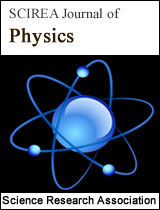Comparative study of the performances of opaque and transparent patch antennas
DOI: 10.54647/physics14409 89 Downloads 13302 Views
Author(s)
Abstract
The performances of two microstrip patch antennas with low visual impact are presented in this paper and compared to an opaque solution. These consist in a copper film deposited on a Borofloat 33 glass substrate through a thin titanium gripping layer. The mesh is obtained by wet chemical etching. Antennas differ by the dimensions in the ground plane mesh pattern. The opaque antenna only consists of a full copper deposit. The transparency work was mainly carried out on the ground plane as it is the largest area available. Specific attention is paid to optical transparency in the visible light spectrum, sheet resistance and electromagnetic performances in the [2.8; 3GHz] bandwidth. They are measured in each case, compared and discussed. Both simulations and measurement results show good performance, especially the antenna with the most transparent ground plane: A high level of optical transparency of almost 73%, coupled with a sheet resistance of less than 0.028 Ohms/sq and a gain of about 3.22dBi at 2.8GHz, slightly higher than the gain of the reference opaque antenna of about 2.66dBi at 2.99GHz. The opaque reference antenna has a bandwidth of 1.30 GHz while those of the transparent antennas are about 1.60 GHz and 2.10 GHz (S11< -10dB). This solution presents a real interest for low cost integrated and discrete antenna solutions in ISM band.
Keywords
Conductor meshed, Optical transparency, radiation pattern, transparent antenna
Cite this paper
A. Sissoko, A. Chousseaud, T. Razban, M. Brunet, S. Ginestar, B. Diourté,
Comparative study of the performances of opaque and transparent patch antennas
, SCIREA Journal of Physics.
Volume 7, Issue 1, February 2022 | PP. 1-13.
10.54647/physics14409
References
| [ 1 ] | Y. Kim, C. Lee, S. Hong, C. W. Jung, et Y. Kim, « Design of transparent multilayer film antenna for wireless communication », Electronics Letters, vol. 51, no 1, p. 12‑14, 2015, doi: 10.1049/el.2014.3831. |
| [ 2 ] | T. Minami, « New n-Type Transparent Conducting Oxides », MRS Bulletin, vol. 25, no 8, p. 38‑44, août 2000, doi: 10.1557/mrs2000.149. |
| [ 3 ] | Y. Zhou et R. Azumi, « Carbon nanotube based transparent conductive films: progress, challenges, and perspectives », Science and Technology of Advanced Materials, vol. 17, no 1, p. 493‑516, déc. 2016, doi: 10.1080/14686996.2016.1214526. |
| [ 4 ] | C. Guillén et J. Herrero, « TCO/metal/TCO structures for energy and flexible electronics », Thin Solid Films, vol. 520, no 1, p. 1‑17, oct. 2011, doi: 10.1016/j.tsf.2011.06.091. |
| [ 5 ] | S. Hong, Y. Kim, et C. W. Jung, « Transparent UWB Antenna with IZTO/Ag/IZTO Multilayer Electrode Film », International Journal of Antennas and Propagation, vol. 2016, p. e6751790, oct. 2016, doi: 10.1155/2016/6751790. |
| [ 6 ] | A. Martin, X. Castel, M. Himdi, et O. Lafond, « Mesh parameters influence on transparent and active antennas performance at microwaves », AIP Advances, vol. 7, no 8, p. 085120, août 2017, doi: 10.1063/1.4985746. |
| [ 7 ] | « Borosilikatglas BOROFLOAT® - Downloads | SCHOTT AG ». https://www.schott.com/borofloat/english/download/index.html (consulté le 27 mars 2021). |
| [ 8 ] | E. Hamad, « Design and Implementation of Dual-Band Microstrip Antennas for RFID Reader Application », Ciência e Técnica Vitivinícola, vol. 29, p. 2‑10, sept. 2014. |
| [ 9 ] | J. Hautcoeur et al., « Transparency and electrical properties of meshed metal films », Thin Solid Films, vol. 519, no 11, p. 3851‑3858, mars 2011, doi: 10.1016/j.tsf.2011.01.262. |
| [ 10 ] | J. Hautcoeur, L. Talbi, K. Hettak, et M. Nedil, « 60 GHz optically transparent microstrip antenna made of meshed AuGL material », Microwaves, Antennas & Propagation, IET, vol. 8, p. 1091‑1096, oct. 2014, doi: 10.1049/iet-map.2013.0564. |

